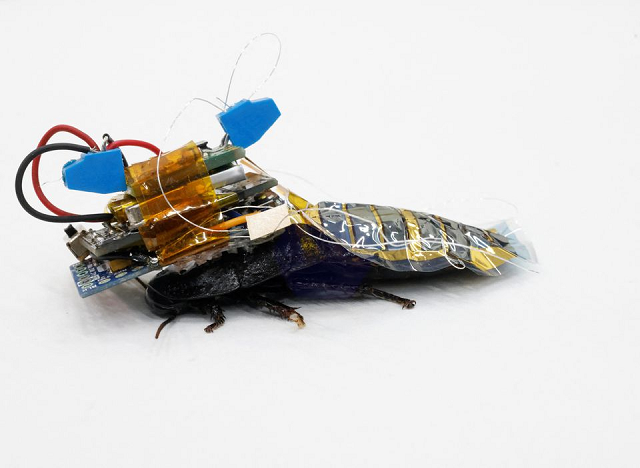Swarms of cyborg cockroaches might be the first rescuers to find survivors if an earthquake occurs in the not too distant future and they are buried under tonnes of debris.
The capacity to place “backpacks” of solar cells and electronics on the bugs and remotely control their movement was recently demonstrated by Japanese researchers, and that is a potential application of their work.
The flexible solar cell film was created by Kenjiro Fukuda and his team at the Thin-Film Device Laboratory at the Japanese research powerhouse Riken.
It is 4 microns thick, or approximately 1/25 the width of a human hair, and can fit on the insect’s abdomen.
If an earthquake strikes in the not-too distant future and survivors are trapped under tones of rubble, the first responders to locate them could be swarms of cyborg cockroaches pic.twitter.com/hQbYH30yDa
— Reuters (@Reuters) September 22, 2022
The solar cell produces enough electricity to process and deliver directional signals into the sensory organs on the bug’s hindquarters, while the film permits the roach to move around without restriction.
The research expands on earlier insect-control studies conducted at Nanyang Technological University in Singapore, and it may one day produce cyborg insects that can penetrate danger zones far more quickly than robots.
Small robots’ batteries run out rapidly, which reduces their time for exploration, according to Fukuda.
“A fundamental advantage (of a cyborg insect) is that the insect causes its movement, thus the amount of electricity needed is far less,” the researchers write.
The next step is to miniaturize the parts so that the insects can move more freely and so that sensors and even cameras may be mounted.
Kakei claimed that he spent 5,000 yen ($35) on components from Tokyo’s renowned Akihabara electronics area to build the cyborg bag.
The roaches can be revived in the lab’s terrarium by removing the backpack and film. The insects can live up to five years in captivity and reach maturity in just four months.
Fukuda envisions a wide range of uses for the solar cell film, which is made up of small layers of plastic, silver, and gold, beyond just catastrophe rescue bugs.
The film could be incorporated into skin patches or clothing to track vital indicators.
Mahnur is MS(development Studies)Student at NUST University, completed BS Hons in Eng Literature. Content Writer, Policy analyst, Climate Change specialist, Teacher, HR Recruiter.










